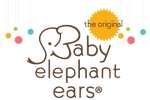7 Ways to Teach Your Kids a Foreign Language
23rd Feb 2015
 We’re living in a big world, but it gets smaller every day.
When our kids are older, the ability to speak a second language will give them
a real leg-up. Here are some ways you can teach a second language.
We’re living in a big world, but it gets smaller every day.
When our kids are older, the ability to speak a second language will give them
a real leg-up. Here are some ways you can teach a second language.
1. Offer the other word
When your child points at his favorite stuffed animal and says “bear,” agree with him and then offer the word in the language you’d like him to learn. Over time, he’ll begin to accumulate all the new vocabulary.
2. Have good expectations
You won’t turn your three-year-old into a fluent speaker of a new language overnight. He’ll need some time to practice with people during conversation. Don’t put too much pressure on him to learn quickly or you’ll make him less likely to participate in the new language.
3. Start as soon as possible
While children don’t usually begin talking intelligibly until two or three years old, they have still picked up a LOT of speech information. They’ve learned cadence, rhythm and patterns. It will be easier for your child to reproduce different sounds if he has been exposed to them early.
4. Surround him with people who speak the language
You don’t have to go through step-by-step lessons, notecards and oral presentations. Simply surround your child with people who speak the language. Encourage family members who speak the language to speak it often around your child so he gets the exposure.
5. Use their favorite programs and shows
Undoubtedly your kids have favorite TV shows or YouTube channels. Find programming they like that’s in the second language, especially if they’ve seen the episode in their first language. This will help them connect the plot or actions of the show with the new language. It will also keep them interesting and learning.
6. Expect mistakes and slip ups
Remember that your child isn’t just learning to grasp his first language; he’s learning how to use language in general. It’s all still new to him. When you throw a second language into the mix, there are sure to be mistakes. Sometimes he’ll dip into one language or another and won’t see the difference between them.
7. Fluency comes from speaking
You (and your child) can study a language as much as you like, but fluency comes from actually saying it out loud in conversation with others. Reading textbooks or lecturing your child won’t suffice. If you’re the only one who speaks the language in your home, find some other people to bring in occasionally so your child gets more exposure.
 Guest Blog by Christina Plejdrup, Mom and Inventor of the Minkey
Guest Blog by Christina Plejdrup, Mom and Inventor of the Minkey
Christina Plejdrup is a mother of a 3-year-old girl, Oliva, who tried many different winter products to see if she could find anything that could get her daughter to keep her gloves on as well as her hat and scarf. Christina tried everything, but nothing worked!
After several failed attempts to get her daughter to keep her gloves, hat and scar on, Christina designed her own solution! It worked like a charm and when they would walk through their neighborhood, several parents asked where they found such a unique and practical winter garment. This is when the Minkey (as her daughter calls it) was born.
The Minkey is a unique 3-in-1 winter hat, gloves and scarf for babies and toddlers. It’s easy to use and goes great under any jacket, snowsuit or vest, and children have plenty of comfort and movement. They will always stay warm and dry where it is important while out in the cold.
The Minkey is now an award-winning product adored by parents and kids all over the globe! Visit http://www.theolie.com for more information.
For more information, visit www.babyelephantears.com.
Interested in writing a guest blog for Baby Elephant Ears? Send your topic idea to pr@babyelephantears.com.
All data and information provided on this site is for informational purposes only. Baby Elephant Ears makes no representations as to accuracy, completeness, current-ness, suitability, or validity of any information on this site and will not be liable for any errors, omissions, or delays in this information, or any losses, injuries, or damages arising from its display or use. All information is provided on an as-is basis.

